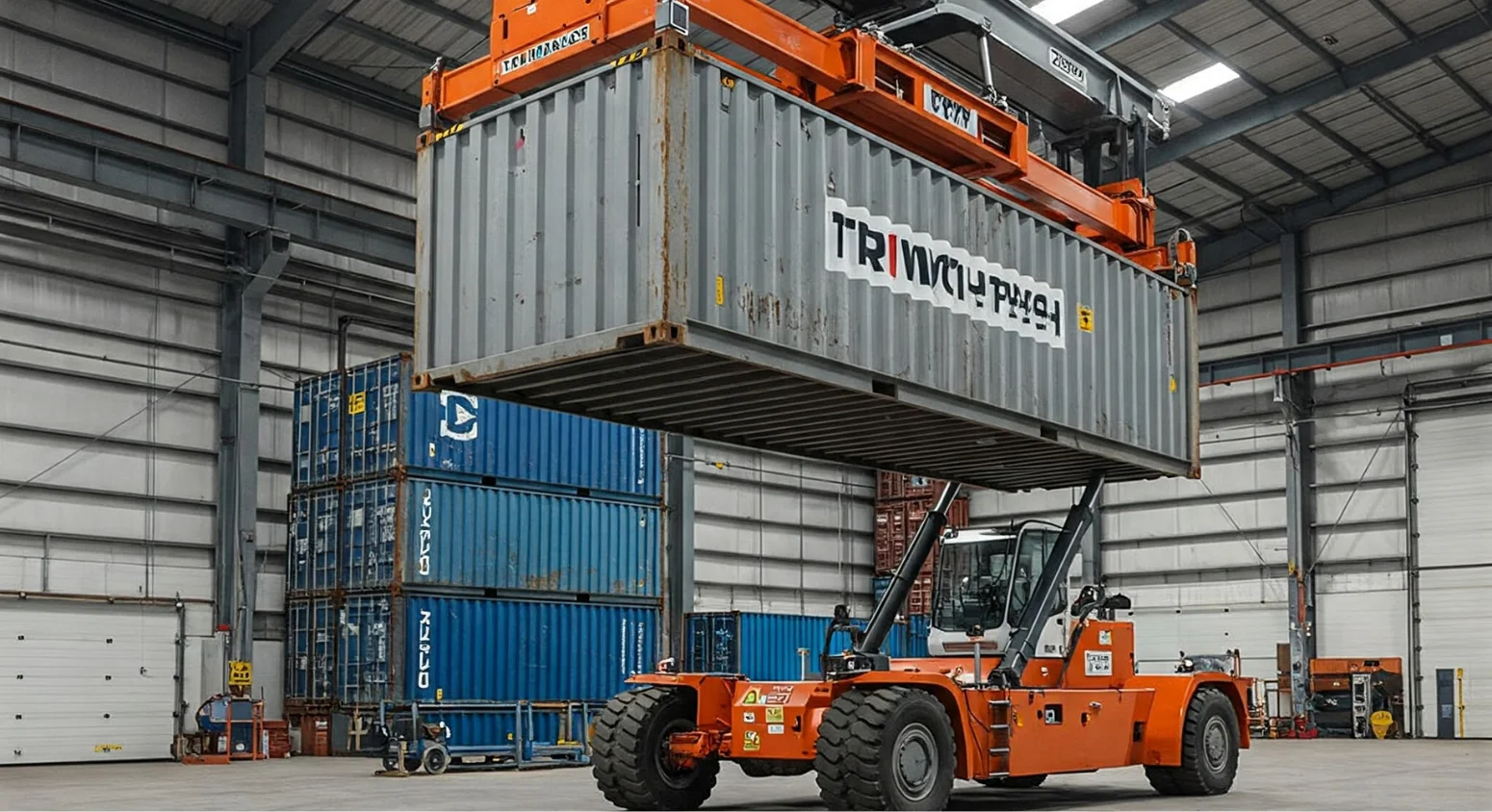Need to move a vehicle using wheel dollies? Wheel dollies have been around for decades, revolutionizing how we transport vehicles.
Whether you’re a DIY enthusiast or a professional mechanic, mastering the art of using wheel dollies can save you time and effort.
In this guide, we’ll walk you through the steps to move your vehicle with ease, giving you the confidence to tackle any moving challenge that comes your way.
Key Takeaways
- Properly understanding wheel dollies: Learn the types of wheel dollies available and choose the right one based on your vehicle’s weight and size.
- Thoroughly prepare your car: Ensure your vehicle is in neutral gear, the parking brake is disengaged, and there are no obstacles in the way before moving it with wheel dollies.
- Execute the process of moving your vehicle carefully: Push or pull the vehicle slowly to prevent any damage, and make sure to have someone guide you if needed.
- Prioritize safety: Use proper safety gear like gloves and goggles, and always follow recommended weight limits for the dollies to prevent accidents.
- When not in use, store the wheel dollies and cars on dollies correctly in a dry and secure location to maintain their functionality for future use.
Understanding Wheel Dollies
What Are Wheel Dollies
Wheel dollies, also known as dollies, are tools designed to facilitate the movement of vehicles, commonly used in automotive settings. They consist of wheels and a platform to support vehicle tires. Their primary purpose is to help maneuver cars in tight spaces.
How Wheel Dollies Work
Wheel dollies operate based on simple mechanics, primarily relying on their rolling action to move vehicles. The distribution of weight plays a crucial role in determining how smoothly the dollies can transport a vehicle. Proper lubrication is essential to enhance the functionality of wheel dollies.
Types of Wheel Dollies
There are various types of wheel dollies available, ranging from standard options to heavy-duty ones. These dollies cater to different vehicle weights and sizes, ensuring optimal performance for cars. Some specialized wheel dollies come with adjustable heights or locking mechanisms for added versatility.
Advantages of Using Dollies
Moving vehicles with wheel dollies eliminates the need for a tow truck, providing convenience and flexibility. They allow users to easily reposition cars in confined areas without hassle. Using wheel dollies proves to be cost-effective compared to hiring professional movers for vehicle relocation.
Preparing Your Vehicle
Inspect Your Vehicle
When preparing to move a vehicle with wheel dollies, it is crucial to first check the vehicle’s weight and dimensions. This ensures compatibility and prevents any issues during the moving process. Inspect the tires for any damage or wear that could impact the performance of the dollies. Look out for any mechanical problems that may complicate the movement of the vehicle.
Positioning the Dollies
To properly position the dollies, align them correctly under each tire for optimal support. Make sure to place the dollies on flat and stable surfaces to prevent tipping while moving the vehicle. It is essential to double-check that the dollies are securely in place before lifting the vehicle.
Lifting the Vehicle
When lifting the vehicle, use a jack or lift to raise it safely before placing the dollies underneath. Emphasize following proper lifting techniques to avoid any injuries or damage to the vehicle. For added safety, utilize jack stands when working underneath the vehicle.
Moving Your Vehicle
Pushing Techniques
When moving your vehicle with wheel dollies, use a coordinated effort to push it effectively. Start with a rocking motion to get the vehicle moving smoothly. Maintain a steady pace to prevent sudden movements that could destabilize the dollies.
Steering Control
To steer the vehicle on dollies, ensure clear communication among team members. Practice steering techniques in an open space before navigating tight areas. This will help you achieve better maneuverability and avoid accidents.
Navigating Tight Spaces
Before attempting to move your vehicle in confined spaces, assess the area carefully. Make small adjustments instead of large turns to maintain control over the vehicle. Patience and teamwork are key when navigating through tight spots.
Using on Different Surfaces
Different surfaces like grass, gravel, or concrete can impact how the dollies perform. Test the dollies on various surfaces to understand their capabilities. If needed, opt for dollies designed for uneven or soft ground for better performance.
Safety Tips
Avoid Common Mistakes
Identify common errors like placing dollies improperly or forgetting to lubricate them. Overloading dollies can lead to accidents. Take time to read instructions thoroughly.
Wear Protective Gear
It is crucial to wear protective gear such as gloves and steel-toed boots for safety. Using knee pads when working close to the ground is advisable. Safety glasses protect against debris.
Check Dolly Condition
Before each use, inspect the dollies for wear and tear. Check the wheel alignment and bearing functionality. Replace damaged components promptly for safe operation.
Follow Manufacturer Guidelines
Always follow the manufacturer’s instructions for correct usage. Understand weight limits and operational procedures. Consult the manual for maintenance tips specific to your dolly model.
Storing Vehicles on Dollies
Long-Term Storage Tips
Store the car dollies in a dry, cool area to prevent rust and degradation over time. Ensure to clean the dollies after each use to eliminate dirt and debris buildup. Perform periodic inspections during storage to detect any potential issues early on.
Protecting Tires
Use tire covers to shield tires from UV rays and environmental damage, preserving their integrity. It’s crucial to maintain proper tire pressure while the vehicle is on dollies to prevent damage. Rotate the tires regularly to avoid flat spots that can occur during long-term storage.
Maintaining Dolly Condition
Regularly lubricate the wheels and pivot bearings of urethane casters to ensure smooth movement. Cleaning the dollies after each use helps in extending their lifespan and efficiency. Keeping a maintenance log is recommended to track repairs and replacements needed for optimal performance.
Final Remarks
You’ve learned all about wheel dollies, from how to use them to the safety measures to keep in mind. Remember, proper preparation is key, whether you’re moving a vehicle or storing it. Always prioritize safety and take your time when maneuvering your car on dollies. Now that you’re equipped with this knowledge, go ahead and tackle that vehicle-moving task with confidence!
Frequently Asked Questions
How do wheel dollies work?
Wheel dollies are designed to help move vehicles by lifting them slightly off the ground so their wheels can roll freely. They are like little helpers that allow you to maneuver your vehicle easily in tight spaces or when it’s not drivable.
Do I need any special equipment to use wheel dollies?
Yes, you will need a car jack/lift to put the wheel dollies under the car, you will also need to make sure that you have a set of wheel dollies that match the weight capacity of your vehicle. Having basic tools like a wrench or socket set might be handy for securing the dollies to your vehicle securely.
Is it safe to move a vehicle with wheel dollies?
When used correctly and on level ground, moving a vehicle with wheel dollies is generally safe. However, always ensure the vehicle is in neutral gear, the parking brake is engaged, and follow proper safety precautions to prevent accidents.
Can I use wheel dollies on all types of vehicles?
Wheel dollies are suitable for most vehicles, including cars, trucks, and SUVs. However, it’s important to check the weight capacity of the dollies to ensure they can safely support your specific vehicle. Always refer to the manufacturer’s guidelines for compatibility.
How should I store my vehicle on wheel dollies?
When storing a vehicle on wheel dollies, make sure it is parked on a flat surface to prevent rolling. Consider using chocks behind the wheels for extra security. Regularly inspect the dollies for any signs of wear and tear to ensure safe storage over time.



